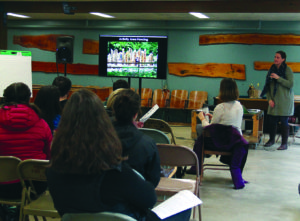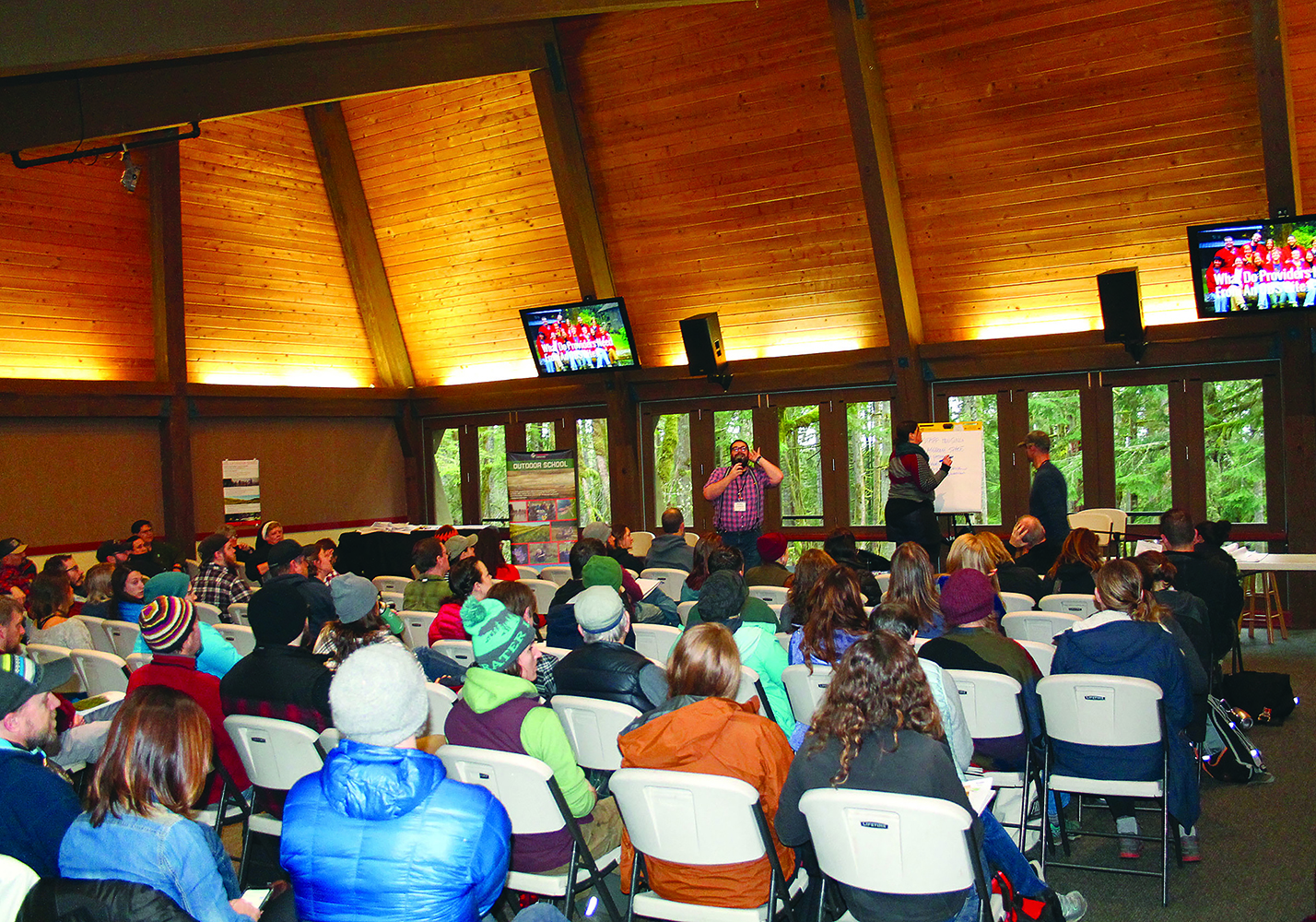By Sarah Brown
Lebanon Local
Outdoor School providers from across Oregon converged at Camp Tadmor in late January to build opportunities for improvement of Outdoor School programs through the Oregon State University Extension Service Outdoor School Program.
The gathering was at full attendance with 175 participants, and more on the waiting list, to network and learn how they might use Measure 99 funds to start or enhance Outdoor School programs.
OSU had two goals for the gathering, organizers said.
One was to increase understanding and competency in order to improve the quality of the program and provide equitable opportunities for children of all abilities.
The second was to help Outdoor School providers to develop a statewide support network among themselves, and share ideas.
Until this year, there was no support for anything like this, said Kris Elliott, program leader through OSU.
“Every single provider across the state, they were on their own; they weren’t talking to each other. In the last 60 years that Outdoor School has been around, this has never happened,” he said.
Providers and site managers learned best practices of risk management, and how to build a functionable cost model, create equitable landscapes and opportunities, evaluate a program’s curriculum, provide staffing, access Measure 99 funds and other funding options, and partner with mentors.

Photo by Sarah Brown
At Outdoor School, a three- to five-day camp, students learn about natural resources, environmental education, science education, field studies, streams and forestry, but it goes beyond that, Elliott said.
“Something happens, something changes in their mindset on school, and they’re better, they have better relationships with their teachers,” he said.
“We see less discipline issues, we see higher attendance rates; we’ve also seen increases in test scores. Students who attended Outdoor School tend to do better on those tests than students who don’t go.”
Senate Bill 439 established a law that basically said Outdoor School is important and it should be supported by the state, Elliott explained. It also charged OSU Extension with administering the program.
From there, the Gray Family Foundation and Friends of Outdoor School lobbied to get ballot Measure 99 to voters, which passed in all counties but one in 2016.
Funded through lottery, Outdoor School received $24 million for the first two years of the program, and just received $46.8 million for the next two years.
“That is what’s considered full funding; so basically, there’s funding now for every kid (fifth- and sixth-graders) to go in the state. The district, the family and the student should not have to pay a cent,” Elliott said.
The funds can also be used for program support and professional development, including last week’s gathering, “because those Outdoor School providers haven’t really had anything, and now they do,” he said.
“Over the last 60 years, most Outdoor Schools lose money,” he said. “They make it back through donations or through other programming. But they believe so much in the mission of Outdoor School that many of them have either broken even or lost money.”
A majority of those who attended the gathering were site providers, including Camp Tadmor. Andy Lindberg, of Friends of Outdoor School, helped those providers develop a pricing plan where they can at least break even and start to reinvest in their facilities, Elliott said.
“A lot of the buildings across the states like this, they need new roofs or septic systems, and a lot of that has been neglected because they’ve just been in survival mode. Now they can start to reinvest and make sure the facilities are comfortable and safe for students.”
As for Camp Tadmor itself, the site could be considered a “veteran” of Outdoor School, as it’s been hosting the program for 45 years.
“The bigger piece for us is the wear and tear on the facilities that hosting Outdoor Schools cost us in terms of just maintaining buildings, trails, lakefront, all that, with that many students coming through,” said Dave Bertz, director of business and operations at Camp Tadmor.
Bertz has a longstanding relationship with Gray Family Foundation, Friends of Outdoor School and OSU, and enough experience to share some of his input at the gathering.
“Our workshop was centered around building relationships and connections between Outdoor School sites, like Camp Tadmor, and the schools, and then the schools to their districts,” he said.
Overall, the gathering provided a “huge” networking and resource fountain for newcomers of Outdoor School providers, Bertz said.
“A comment I heard over and over again, ‘It’s so good to be together with people that are doing what we’re doing and know that there are shared resources that we can all tap into,’” he said. “There were a lot of significant positive outcomes from the time we had together.”





